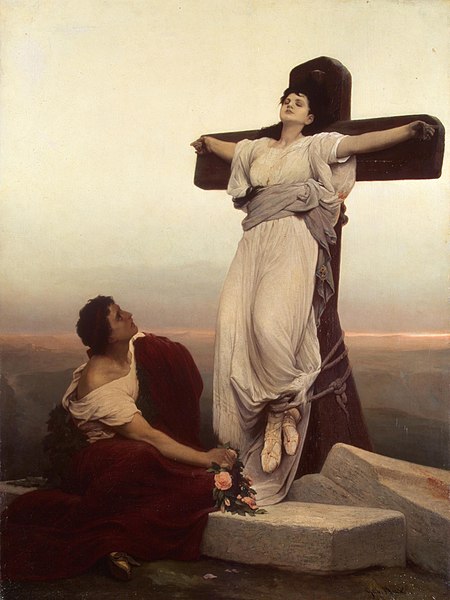The Crucified Soldier was the widespread story of an Allied soldier serving in the Canadian Corps who may have been crucified with bayonets on a barn door or a tree, while fighting on the Western Front during World War I. Three witnesses said they saw an unidentified crucified Canadian soldier near the battlefield of Ypres, Belgium, on or around 24 April 1915, but eyewitness accounts were somewhat contradictory, no crucified body was recovered and the identity of the alleged crucified soldier was not discovered at the time.
American propaganda poster from the Philippines depicting the crucified soldier
Depiction of the crucified soldier on the sculpture titled Canada's Golgotha, by Francis Derwent Wood (crafted in 1918). The exhibition of the piece has been the subject of controversy.
Crucifixion is a method of capital punishment in which the condemned is tied or nailed to a large wooden cross, beam or stake and left to hang until eventual death. It was used as a punishment by the Persians, Carthaginians, and Romans, among others. Crucifixion has been used in some countries as recently as the early 20th century.
A 15th century depiction of Jesus crucified between the two thieves
Crucifixion with Greek Inscriptions by Georgios Markazinis circa 1647
Gabriel von Max's 1866 painting Martyress depicts a crucified young woman and a young man laying flowers at her feet
1st century calcareous heel bone with a nail






